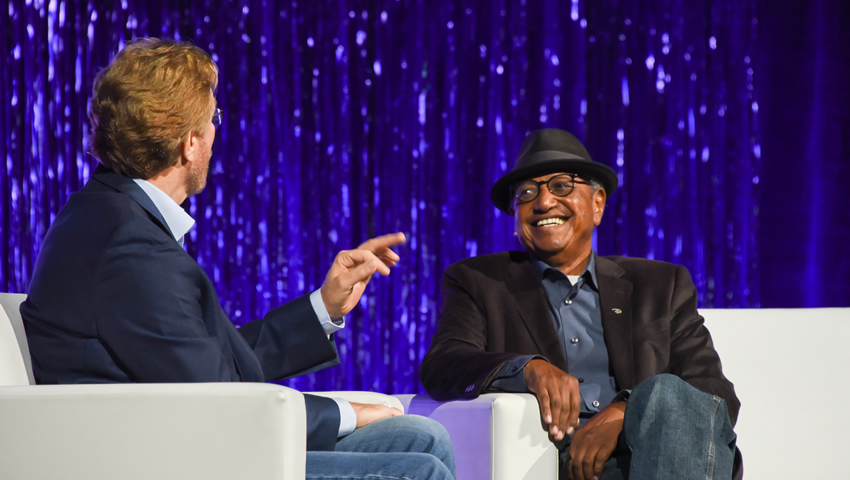photo of Steve Waskul and Floyd Norman, courtesy of John Fujii for SIGRRAPH 2017
On Monday, 31 July, SIGGRAPH 2017 attendees heard from Floyd Norman, conference keynote speaker and the first African-American storyboard artist at Walt Disney Animation Studios. Norman participated in an in-depth discussion with Steve Waskul (of StudioXperience), and gave attendees a behind-the-scenes look at his career with Disney, what motivates him today, and key advice for new animators.
Early Career
When Norman started working in animation, the profession was not considered a “real profession” and people would often say, “Have you considered a real job?” However, his parents, and especially his grandmother, were supportive and his grandmother even helped him build his first animation stand where he made cartoons in high school. In the early days, there were hardly any books on animation. For the most part, Norman and his future colleagues taught themselves.
Shortly after Norman began his career, he received the opportunity to work directly with Walt Disney on “The Jungle Book.” The studio employed hundreds of animators but only about a dozen employees worked directly with Walt. Norman recalls that he was terrified when he got the opportunity; it was never something he applied for, but soon realized was an incredible opportunity that set the scene for the rest of his career.
Advice to New Animators
During Norman’s time working with Walt Disney, he recalls his boss constantly telling the young team, “Don’t watch the movie, watch the audience.” Norman would see the films he made mainly because he wanted to know if his work was connecting with the audience and resonating. The best way to know if a film is working or failing is based on an audience’s reaction or non-reaction, and the best feeling in the world — to Norman — is when a choice you made makes an audience laugh.
Norman continues to learn from the Disney classics that he saw as a child, which continue to teach animators today because there’s no waste and no excess. Walt Disney was a great story editor because he knew exactly what to leave in and what to take out.
More Highlights from the Keynote
- Norman was one of the first animators to bring a Macintosh (now Apple!) computer to the Walt Disney Studios. When he set up the computer on his desk, executives came to him and said, “Computer? What can you do with a computer?” He knew he would be able to do something with the technology… and clearly it has matured today!
- Advice for younger students: Since filmmaking is collaborative, we’re all collaborators. Whether working at Disney in the 40s or at Pixar present-day, we are all collaborating. The greatest benefit of working with so many people is the different strengths they bring: some bring knowledge of art and design, others storytelling. When you pool talent together, you can create something marvelous. Today, Norman talks often with 20-year-olds at Pixar and shares his life experience, passing knowledge along to those who crave it.
- Norman’s thoughts on VR/AR: Always remember that the content is the most important. Yes, the technology is cool but if the story does not work and the audience is not engaged, technology is not going to save you.
Norman continues to look forward to his next chapter and remains excited about the animation business, just like he was when he first came into the business in the 1950s.



